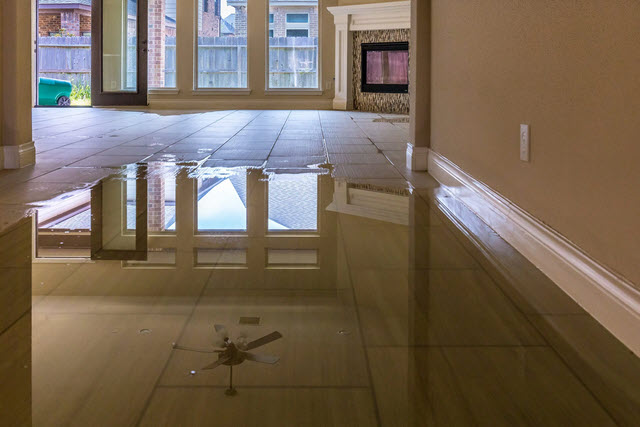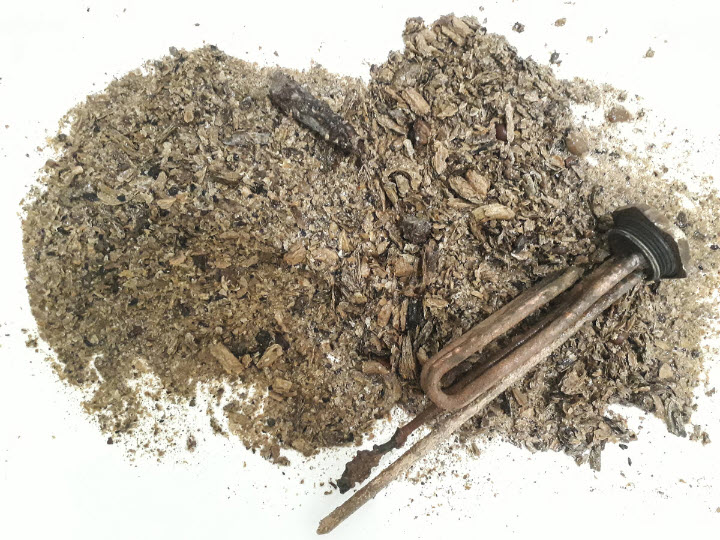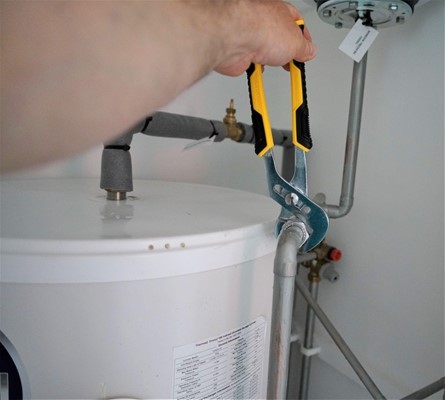Do you need Water Heater Maintenance ASAP?
Click here to schedule your appointment now

Serving Omaha & Surrounding Communities
Water Heater Flooding
Flooding, like fire, is one of those things that we hope to never have to deal with in our homes. But sometimes, it just isn’t up to us. If you have liquid from an unknown source and you just can’t find the leak, you might want to suspect water heater flooding.
Water heaters provide hot water to your home. Without them, you couldn’t sterilize dishes, take a bath or shower that wasn’t freezing, or wash your face in the winter without feeling like you were in danger of turning into any icicle. Modern systems have leak prevention measures, but like all preventative measures, they don’t work 100% of the time.
One of the preventative measures on newer machines is a leak pan. This goes under the tank, and collects drips from slow to moderate leaks. However, if your system develops a big leak, it may overflow the pan. Since they are also pressurized, you may find that it has sprayed right over the pan.
Because of their locations, slow leaks can go unnoticed for far longer than you would like. The best cure for this problem is prevention– have someone knowledgeable show you what to look for, and inspect your system periodically. This will help you catch leaks before they cause structural damage to your whole home.
If you find yourself experiencing flooding in any part of your home, the first thing you need to do is find out where it is coming from. While your water heater might be the culprit, it could also be a broken pipe in any number of locations. Unless you can see the leak in the system, don’t assume you know where the liquid is coming from, and call a plumber to find out.
If the leak is definitely coming from your water heater, the first thing you should do is turn it off. The machines usually have emergency shut-off valves, and most have instructions near them. If your system is very old, it might lack one or both of these things. In that case, you’ll need a plumber.
Once the leak is contained, you’ll have to either fix or replace your system. Don’t forget about potential flood damage, either. Unless the spill was completely contained by the emergency leak pan, you’ll need to assess the area that it spilled onto. If the leak has been slow but persistent, you might have mold. Consult a flood specialist if you find mold, or have other concerns.
Water heaters have a shelf life, after which, parts can be expected to start failing. This life is typically 6 to 15 years, depending on the model and the specific machine. If your system is older than this, you might consider replacing it before it fails and leaves you to deal with a mess.
Water heater flooding is one of those things that nobody wants to deal with, but sometimes we have to. The internet is a great resource for looking up specialists that can help you with both the immediate problem and the secondary issues. But if you remember your maintenance, hopefully you will never have to use them.

How to Clean Commercial Water Heaters From Sediments
Commercial water heaters must be maintained periodically to ensure a long lasting operation in businesses and offices. Unlike a residential water heater that can be maintained by the home owner, commercial plumbing engineers are responsible for this unit. Commercial water heaters plumbing problems can put the whole business activity at a complete standstill and therefore may cause expensive business downtime.
Sediment build up in commercial water heaters is a common plumbing problem that requires instant cleaning to stave off complications that can arise from burst tanks to extensive flooding. When facing a faulty water heater your wisest option is to call up the commercial plumber of your business. Yet if you prefer to apply do it yourself repair is then the following guidance might be of value. Even if you decide to repair by yourself the water heaters make sure a commercial plumber is near by to take over should a complication arise.
Clearing sediment build up improves the total efficiency of the commercial water heater. After switching off gas, electricity, and the re-circulating pump drain the water tank. Sometimes the drainage of the tank is impossible to do because of the sediment obstruction. You must first break up the sediment blockage in the drain valve to open up the tube through which water is emptied from the tank. Clearing sediment concentration from the drain valve should be conducted in a gentle manner to avoid breaking the valve during the process. Commercial plumbers are equipped with advanced gear to dissolve the clog without harming the unit itself.
Draining the tank is not the end of the job. After the tank is empty from water can the side port be removed, vacuumed from the inside and cleaned at the opening. Take the opportunity to check the gasket for any damage, and if that is the case replace the faulty part to prevent leakage. Tightly install gasket to recreate a water seal. In electric water heaters examine the unit for any rusting that can impede the workings of the water heater. When spotting rusting call your commercial plumber or manufacturer in to apply the appropriate repair.
Avoid trying to clean out sediment if you lack some commercial plumbing know-how or in an event that you have doubts in regards to what to do when. It is better to pay the commercial plumber than end up with a costly split water heater and a flooded floor because you have damaged a part during your D.I.Y repair.


Water Heater Maintenance Tip
Flushing is an annual chore relatively easy to do, and doesn’t take too much time while 40 or 50 gals water drains and refills the tank. Flushing removes calcium or other mineral sediment build-up on the bottom of the tank that otherwise reduces capacity and insulates the water from the bottom fired gas burner or in-tank electrical element, reducing heating efficiency. Annual maintenance is important is an area such as Salt Lake City, where the water is somewhat alkaline.
Here’s the simple setup. Modify the water heater’s original compression drain valve outlet at the bottom of the tank, replacing it with a quarter turn ball valve with hose threading to allow sediment to pass through without restriction. Then, all you need is to hook up a short length of garden hose from the valve to a nearby floor drain.
Now, here’s the flushing procedure, to be done when there is low household demand for hot water. First, and very importantly, turn off the gas supply or electrical power to the water heater so the empty tank or element will not burn. Now, shut off the house water supply valve from the water meter. Then open an upstairs sink hot water faucet or two to allow air to replace water draining out of the lines and tank. After a garden hose is connected from the water heater drain outlet to a basement floor drain, open the drain outlet ball valve. Monitor water flow out of the hose. Hot water should begin to flow at least moderately. If water flow is a mere trickle, there may be sediment blocking the ball valve. Turn on and off the house water supply valve several times to break up and jet force sediment through the valve.
Sediment Build-up-Sediment is created when hard water is heated. The build-up of sediment in the bottom of the tank can cause the bottom to overheat and melt away the glass lining of the tank. It can drift into recirculating lines, jam open check valves, and cause the recirculating pump to stick until it burns out. Sediment build-up on the bottom of gas water heaters encourages noisy operation. The noise is caused by small amounts of water under the sediment layer turning into steam bubbles, which then collapse violently.
Note: Sediment build-up can reduce the energy efficiency of the heater and void the warranty on some Residential Water Heaters!
Serving Omaha & Surrounding Areas
Hours of Operation

ASAP Appliance & Plumbing
Ready To Help Today! Send your info below


